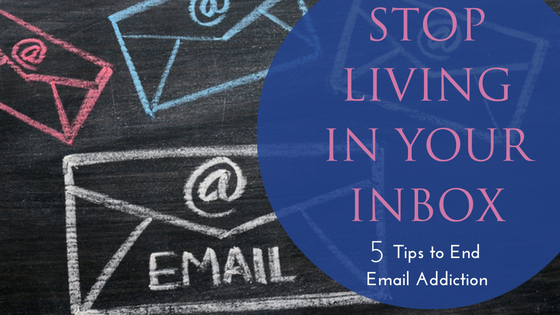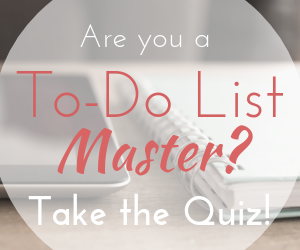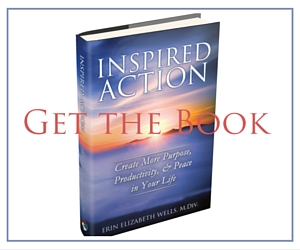A few months ago, I re-watched the romantic classic You’ve Got Mail. I couldn’t help thinking how sweet and dated it was! Little dial-up noises, and the joy that we used to feel when we’d hear the cheerful “You’ve Got Mail” notification from AOL. Now, most of us have more email than we want (and I recognize the irony that some of you are reading this in an email message.)
It’s become the “de facto” form of communication for business and personal life for most of us, which also means that we receive anywhere from 50 to 500 emails every day. That’s why the skills to manage our email flow have become critical to our personal productivity. However, while I know that we’re not going to be eliminating this form of communication any time soon, I need to remind you that email is NOT your friend.
Studies have been done that demonstrate that reducing the number of times you check email each day reduces overall stress levels. That’s why to help you achieve these stress-level gains for your life, let’s explore my five top tips for reducing your email stress.
1) Put Your Agenda First!
The biggest problem with being addicted to our email inbox is that it’s a reactive rather than proactive mode of living. If we spend our work hours always replying to other people’s messages, then we’re not taking the time to work on the proactive and creative work that’s important to us.
Replying to everyone else’s questions and needs doesn’t move your priorities forward. Email is not one of your “Big Rocks,” as Stephen Covey would say. So, the best way to put email “in its place” is to know what your priorities are and work on them first. Unfortunately, many people are so accustomed to running their day from their inbox that they don’t even know how to identify their priorities outside of it.
As strange as it sounds, in order to get unstuck from your email inbox you might need to stop and figure out what you would want to be working on instead. If you’re unclear about what work you want to be doing, then email becomes a great way to “feel productive” while getting very little of substance actually done.
That’s why I teach my clients to choose their Inspired Action each day. That’s the one task that will move their priorities forward. Your Inspired Action is a commitment to yourself. Come hell or high water, this one task will get done before you finish work or go to sleep that day. When email distracts you from your Inspired Action, then you’re giving up your power to direct your own focus, time, and energy to other people’s agendas rather than your priorities. Danger Will Robinson! Not a good way to be effective. So know what’s most important to you, and put your agenda and priorities first.
2) Avoid Email During Your First 90 Minutes of Work
Julie Morgenstern is famous for her book Never Check Email in the Morning. Personally, I think she’s absolutely right for the reasons mentioned above. Your first block of work is likely when your mind is freshest. So, not only do I encourage you to not check email right when you wake up or over coffee at the kitchen table in the morning… I would avoid it for the first 90 minutes you sit down to work.
WHAT?! I know I’ve just scared a bunch of you. For many of my clients that means they don’t check email until 10:30 am. Is that idea starting to make you twitch? I know it can for many email addicted folks. But, every single client who has enacted this change has found two benefits:
1) They get more of their tasks done because they give it full focus for the first hour or more of work.
2) They feel less stressed and distracted during the morning because they aren’t spinning about what just landed in their inbox.
Are those good enough reasons to encourage you to test it out for a week? What if for one whole week you didn’t check email until 90 minutes after you started your work day? Try it and notice what’s different.
3) Avoid Email For 90 Minutes Before Bed
For different reasons, I would encourage you to also not check email within 90 minutes of going to bed. Generally, checking email just gets our brains rev’ed up and thinking about tasks, conversations, and work. That’s not where you want your brain heading just before you’re aiming for a restful night’s sleep.
So, close your email inbox at least an hour (and 90 minutes would be better) before you head to bed. This time also needs protecting to ensure that you are focused on self-care and closing down your world for the night. Don’t let other people’s concerns and agendas ruin your night’s sleep.
4) Move Your Email App Icon Off the Main Screen
I used to have a horrible habit of picking up my smartphone and just clicking the email app immediately. Which meant that for a while, I was like many of you and checking my email 30 times a day every time I picked up my phone. I realized that habit was AWFUL! It had to stop. But, the impulse was strong.
So, I moved the email app to the last page of my phone apps. In other words, with one simple change I made it a lot harder to open my email by habit. (Since then I’ve done the same thing with Facebook too.) This one change to my app layout allowed me to break that problematic habit and get back to handling email on my schedule rather than every time I pick up my phone.
Similarly, I removed all the notifications and the badges that show how many unread messages are waiting because curiosity would also have me opening the app to see what was there. Help short-circuit this kind of distracting curiosity by removing that information.
5) Check Email Three Times a Day
You can choose your times, but if you reduce the window of opportunity by removing the morning and late evening hours then you’ll narrow your email window to something more manageable. Think about it in relationship to your personal daily rhythm: before lunch, after lunch, end of the work day, right after dinner are all potential times.
For me, it’s usually late morning (around 11am), early afternoon (around 2:30pm), and just before signing off for the day (around 4:30pm). Honestly, often I think it’s really only twice a day at 11am & 4:30pm. Anything that comes in after that usually can wait for tomorrow. And, the people who are closest to me know they can reach me via text or Slack message as needed for more pressing communications. Which is also how I remove a bunch of minor back-and-forth messages from my inbox and keep things short and sweet.
It might help if you find something as a replacement habit. Each time you would have jumped into your email inbox, what could you do instead? Open your task list? Turn on a song and dance for 3 minutes? Open your ebook app and read for 5 minutes? If you find something to fill the space that email used to take up, then it will get easier to break the cycle.
Next Actions
If you’ve recognized that some of these tricks might help you address your email addiction, then give them a whirl. As they say, the first step is acknowledging you have a problem 😉. Breaking the email addiction can be challenging for some people, but once you’ve tasted that freedom you’ll never want to go back.



